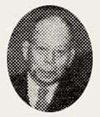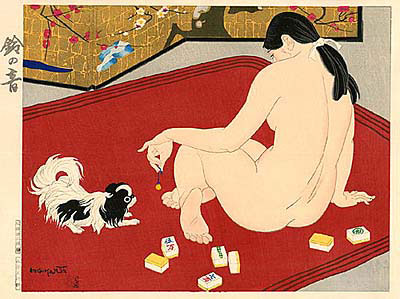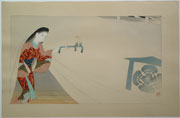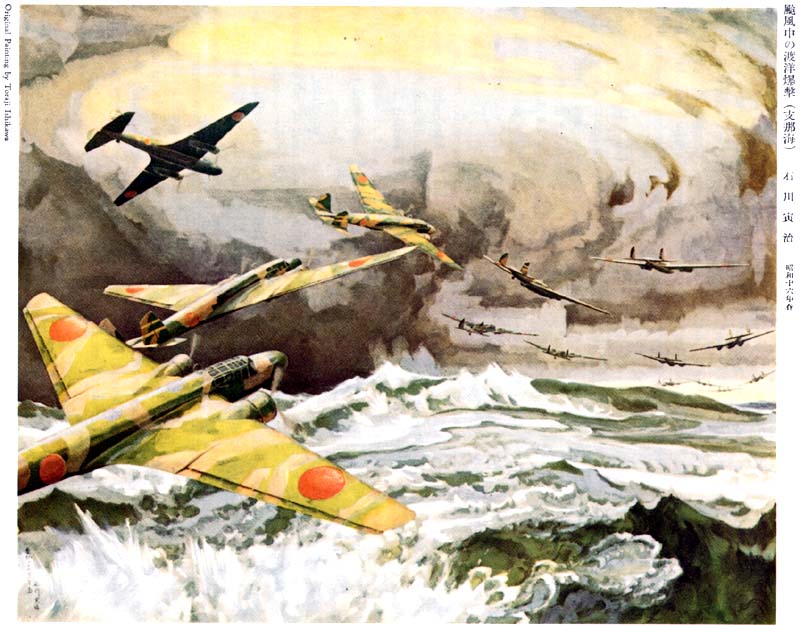Biographical Data
Biography
Ishikawa Toraji 石川寅治 (1875-1964)
Primarily known as a landscape painter, Toraji entered his paintings in the exhibitions of the Meiji Bijutsukai (Meiji Fine Arts Society). In 1902 he co-founded the Taiheiyo Gakai (Pacific Western-style Art Society Institute or Pacific Painting Society), the successor to the Meiji Bijutsukai.
He traveled to the United States and Europe in the early 1900s, returning to Japan in 1904. In that same year he published an article in the literary magazine Myōjō on Alphonse Mucha, the Czech Art Nouveau painter.2 After his return he exhibited oil paintings at the Japanese government sponsored Bunten and Teiten exhibitions and at the Panama-Pacific Exposition in San Francisco in 1915, where he won a bronze medal for his painting titled Grape.3
He traveled to the United States and Europe in the early 1900s, returning to Japan in 1904. In that same year he published an article in the literary magazine Myōjō on Alphonse Mucha, the Czech Art Nouveau painter.2 After his return he exhibited oil paintings at the Japanese government sponsored Bunten and Teiten exhibitions and at the Panama-Pacific Exposition in San Francisco in 1915, where he won a bronze medal for his painting titled Grape.3
Ishikawa had also traveled to Taiwan, as did a number of Japanese painters with the encouragement of the government, and reported in 1917:
| Particularly interesting things about traveling in the island [of Taiwan] were that the vegetation was verdant and thriving even in hard winter, and I saw Chinese-style edifices in a state of deterioration and ruin. Reddish flaking walls and broken eves were all very interesting. In addition, I also made pictures of interesting living conditions of native Han people.4 |
He is, perhaps, best known for his 1934-1935 woodblock series Ten Types of Female Nudes which he designed and published, with the carving being done by Yamagishi Kazue. In commenting on The Sound of a Bell, a print in the series, Merritt states, "Ishikawa thought of himself as a yōga (Western-style) painter...but in this print he abandoned himself with obvious pleasure to the flat pattern and decorative placement that were his birthright."5 This series of nudes was controversial and it was reported that "some of the prints and at least two of the wood blocks were destroyed by the authorities."6 Calling the series "a radical departure from both Ishikawa's earlier and later print subjects and styles which were based on his watercolors and oil landscapes" Kendall Brown speculates that "[p]erhaps he was led 'astray' by more 'decadent' friends..."7

The Sound of a Bell, 1934
Art historian Stacey Hong notes that despite "running afoul of the government" with Ten Nudes, in 1938 "Ishikawa was asked by the Navy to paint scenes of China" and during WWII, he "contributed paintings of battles; for example his Transoceanic Bombing (Tōyo bakugeki) was exhibited at the Fifth Naval Art Exhibition (Daigokai kaiyo bijutsuten) in 1943."8
In 1943 Ishikawa was inaugurated as the head of Taiheiyo Bijutsu Gakkō (Pacific Art School). In 1947 he joined the Shigenkai, a society to exhibit Western-style painting, as a founding member. In 1950 he became an adviser to Nitten (The Japan Fine Arts Exhibition.)9 He contributed significantly to art education at the Tokyo Koto Shihan Gakkō (Tokyo Higher Normal School) and the Tokyo University of Education. He received the Imperial Award of the Japan Art Academy in 1953. He died in Tokyo in 1964 at the age of 89.
1 Light in Darkness: Women in Japanese Prints of Early Shōwa (1926-1945), Kendall H. Brown, et. al., Fisher Gallery, University of Southern California, 1996, p. 19.
2 Being Modern in Japan: Culture and Society from the 1910s to the 1930s, Elise K. Tipton and John Clark, University of Hawaii Press, 2000, p. 2
3 Official catalogue (illustrated) of the Department of Fine Arts, Panama-Pacific International Exposition (with awards) San Francisco, California, Wahlgreen Company, 1915, P. 9.
3 Official catalogue (illustrated) of the Department of Fine Arts, Panama-Pacific International Exposition (with awards) San Francisco, California, Wahlgreen Company, 1915, P. 9.
4 "Cultural Identity and the Making of Modern Taiwanese Painting During the Japanese Colonial Period (1895-1945)," Jen-Yi Lai, University of Michigan, 2008 (a dissertation), p. 151.
5 Modern Japanese Woodblock Prints - The Early Years, Helen Merritt, University of Hawaii Press, 1998, p. 98.
5 Modern Japanese Woodblock Prints - The Early Years, Helen Merritt, University of Hawaii Press, 1998, p. 98.
6 Op. cit. Light in Darkness
7 Ibid. p. 73.
8 Ibid. p. 19.
9 For information on the modern day Nitten see http://www.nitten.or.jp/english/index.html


